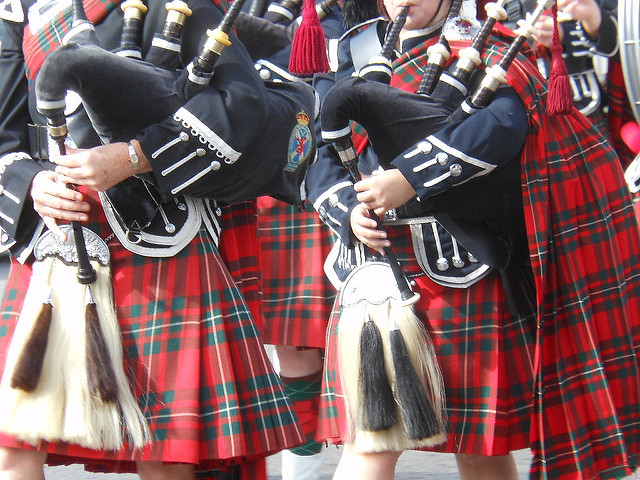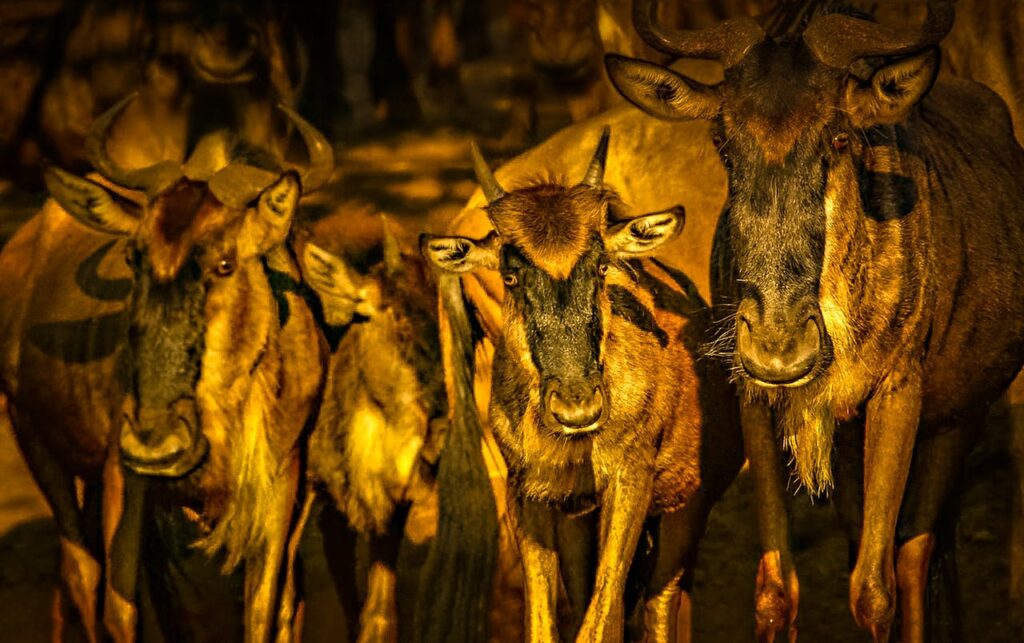When you visit the Maasai Mara, one of the first things that will catch your eye is the vibrant red cloth worn by the Maasai people. This cloth, known as the Shuka, is not just a piece of clothing—it’s a symbol of Maasai identity and culture. The Shuka’s bold colors and patterns are more than just decorative; they carry a rich history and serve practical purposes in the harsh environment of East Africa.
A Brief History of the Shuka
The Shuka, often called the “African blanket,” is most commonly associated with the Maasai of Kenya and Tanzania. Interestingly, the Shuka as we know it today is relatively modern. Before the 1960s, the Maasai wore garments made from animal hides, such as calfskin and sheepskin. The shift from leather to cotton Shuka cloth happened during the colonial period, though the exact reasons for this change remain unclear.
Link to Scottish Kilt
Some historians suggest that the introduction of the Shuka may be linked to the arrival of Scottish missionaries, whose tartan patterns resemble the checked designs of the Shuka.

The Maasai Shuka, with its bold colors and checkered patterns, traces its origins to the Scottish kilt, particularly the Great Kilt (Feileadh Mòr), which emerged at the end of the 16th century. The Great Kilt, or belted plaid (Breacan an Fhéilidh), was a full-length garment that served multiple purposes. Its upper half could be draped over the shoulder as a cloak or pulled over the head as a hood, offering both protection and versatility.

When Scottish missionaries and traders arrived in East Africa during the colonial era, they brought with them the iconic patterns and fabrics of their homeland. The Maasai, who were transitioning from their traditional leather garments made from calf hides and sheepskin, began adopting the colorful and durable cotton fabrics introduced by the Scots. Over time, the checkered designs of the Great Kilt influenced the development of the Maasai Shuka, which has since become a central element of Maasai culture.
The adoption of the Shuka not only provided practical benefits in the harsh savannah environment but also allowed the Maasai to integrate a new material into their traditional dress while making it uniquely their own. Today, the Shuka’s vibrant red and other colors are a symbol of Maasai identity, but its roots are firmly linked to the Scottish kilt, reflecting a fascinating blend of cultural exchange and adaptation.
Joseph Thomson, a Scotting Explorer is credited to have introduced the shukas. Others believe that the cloth’s origins are tied to the trade routes that brought textiles to East Africa, with red-and-blue checked fabrics becoming popular as early as the 18th century. Despite its modern adoption, the Shuka has become a defining element of Maasai culture.
The Colors and Patterns of the Shuka
While red is the most iconic color associated with the Shuka, the cloth is also available in blue, black, striped, and checkered patterns. The choice of red is not just aesthetic; it holds deep cultural significance for the Maasai. Red symbolizes bravery, strength, and unity—qualities highly valued in Maasai society. The color also serves a practical purpose, as it is believed to deter wild animals, a useful feature for a community living in close proximity to wildlife.
The durability of the Shuka is another reason for its widespread use. The thick cotton fabric is well-suited to the Maasai’s nomadic lifestyle, providing protection against the harsh sun, the cold nights, and the thorny acacia trees of the savannah. Whether wrapped around the body as a cloak, used as a blanket, or fashioned into various other garments, the Shuka is a versatile piece of clothing that meets the needs of the Maasai in multiple ways.
Cultural Significance of the Shuka
The Shuka is much more than a piece of fabric; it’s a key part of Maasai identity. When you see a Maasai adorned in their Shuka, you’re seeing centuries of tradition woven into the cloth. It’s a statement of who they are and a symbol of their resilience and connection to the land. The Shuka is often paired with intricate beaded jewelry, iron rods, and other traditional adornments, creating a striking visual representation of Maasai culture.
One of the most fascinating aspects of the Shuka is how it is integrated into Maasai ceremonies and daily life. For example, during the Adumu (the Maasai jumping dance), young warriors wear their Shuka with pride, each leap into the air a display of their strength and readiness to take on the responsibilities of adulthood. The Shuka is also present in more somber moments, such as rites of passage and important community gatherings, where it signifies the wearer’s role and status within the society.
The Shuka in Modern Times
In recent years, the Shuka has transcended its traditional role and entered the global fashion scene. Designers and brands have been inspired by its bold patterns and vibrant colors, incorporating elements of the Shuka into contemporary fashion. Kenyan brands like Wan Fam Clothing have taken this further, creating urban wear that pays homage to Maasai heritage. Even high-end fashion houses like Louis Vuitton have featured Maasai checks in their collections, bringing the Shuka to an international audience.
Despite its global reach, the Shuka remains deeply rooted in Maasai culture. Today, it continues to be manufactured in places like Dar es Salaam and even in China, with packaging proudly declaring it as “The Original Maasai Shuka.” This blend of tradition and modernity is a testament to the Shuka’s enduring significance and its ability to adapt while preserving its cultural essence.
Tips for Buying a Shuka
If you’re visiting the Maasai Mara and want to take home a piece of this cultural heritage, consider purchasing a Shuka. They are widely available in local markets, and buying directly from the Maasai is a great way to support the community. Look for Shukas with vibrant colors and quality stitching, and don’t be afraid to ask about the meaning behind the patterns and colors—each Shuka has a story to tell.
Wearing a Shuka back home is not just about owning a beautiful piece of fabric; it’s about carrying a piece of Maasai culture with you. Whether you use it as a blanket, a scarf, or even a wall hanging, the Shuka is a versatile and meaningful souvenir from your travels.
Conclusion
The Shuka is more than just a piece of clothing—it’s a symbol of the Maasai people’s resilience, their connection to the land, and their rich cultural heritage. When you see a Maasai adorned in their Shuka, you’re witnessing a tradition that has adapted to modern times while staying true to its roots. Whether you’re exploring the Maasai Mara or simply appreciating the beauty of the Shuka from afar, understanding its history and significance adds depth to your experience.


